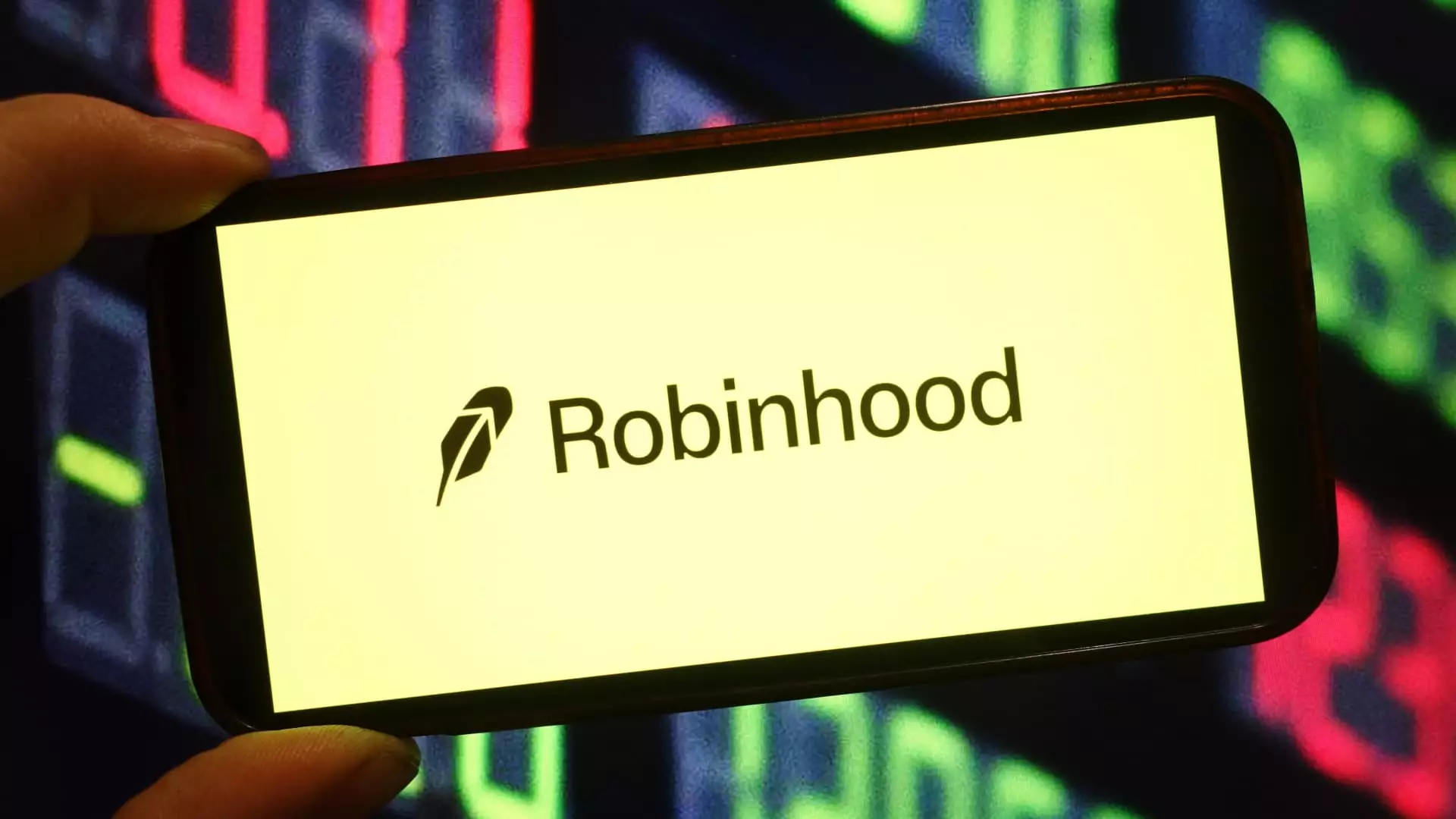7 Key Reasons Why Caution is Crucial for Robinhood Investors in 2025

In an era defined by unpredictability, Robinhood’s share price has recently experienced swings that would leave even seasoned investors feeling dizzy. The stock fluctuated over 11% during the week, illustrating a chaotic landscape where caution should reign supreme. While the platform’s shares saw a brief recovery, climbing 8% on a single day, this seems less a signal of stability and more an illustration of reactive trading behavior that characterizes retail markets today. Often, investors chase after short-lived rallies spurred by external events or government policies—like the current favorable sentiment towards cryptocurrency following Donald Trump’s election victory.
One must question whether this optimism is genuinely reflective of Robinhood’s long-term potential or merely the result of hype. It would be wise for investors to remember that too much enthusiasm can lead to irrational decisions—especially when good news has already been baked into stock prices.
Unpacking the Cryptocurrency Euphoria
Crypto trading has been the golden child of retail investors, and Robinhood has positioned itself as a prominent player in this field. High trading volumes have certainly provided a boon for the company, but these numbers shouldn’t blind potential investors to the nuances of valuation. The inflow of cash from crypto transactions amid a burgeoning interest in digital currencies is not sustainable indefinitely. As advisors like Courtney Garcia have noted, the fervor appears to have been priced into Robinhood’s current stock valuation. When the excitement wanes, what will be left for those who chose to buy in at these elevated levels?
Merely jumping on the crypto bandwagon makes for an enticing pitch, yet Robinhood’s performance must be scrutinized in light of a broader economic landscape. Are the fundamental aspects of the business strong enough to weather potential headwinds? Traditional metrics of success, beyond momentum-driven trading, must be taken into account.
On a Different Note: The AT&T Turnaround
In contrast to the fervor surrounding Robinhood, AT&T paints a different picture. This telecommunications giant has invested time and resources to address its substantial debt while also signaling its strength with planned share buybacks to the tune of $10 billion. It’s a strategy that displays management’s confidence in sustained cash flow and the ability to maintain dividend payments. The company has garnered attention for its potential turnaround narrative, particularly with its divestiture of DirecTV on the horizon.
Seventy percent of analysts not only endorse AT&T but see room for growth there as well. Such a solidified position exudes a sense of stability that Robinhood lacks, perhaps making investing in AT&T seem like the safer bet for those unwilling to swim in the turbulent waters of speculative trading.
Johnson & Johnson: A Pillar of Stability
Turning next to Johnson & Johnson, we find another contrasting story. Garcia identifies this healthcare titan as a classic value investor’s pick—not due to dramatic spikes in its stock price but because of its consistent dividend payments and relatively stable market presence. While it doesn’t have the explosive growth potential associated with tech stocks or up-and-coming trading platforms like Robinhood, it does offer a model of resilience in economic downturns.
With 48% of covering analysts rating Johnson & Johnson as a “buy,” it’s important to consider the appeal of steadiness, especially in a market riddled with uncertainty. The company’s dividend yield, although modest compared to others, represents a steady stream of income that investors often overlook in favor of higher-risk options. This begs the question: is chasing performance worth risking financial security?
The Broader Investment Landscape
The conversation around Robinhood, AT&T, and Johnson & Johnson sparks critical introspection regarding current investment strategies. The lure of fast, substantial financial returns on platforms like Robinhood is tempting but often leads to neglecting foundational investment principles. Conversely, AT&T and Johnson & Johnson represent a recalibration towards reliability and steady income, offering lessons in risk management and patience.
Investors must navigate this intricate landscape with a keen eye. What will ultimately be their focus: quick wins or long-term growth? The answer may lie in understanding the core dynamics of these different companies and their broader implications in a shifting market. As we move into 2025, let us be vigilant, discerning, and, above all, rational in our investment decisions. In a game governed by impulse and speculation, true success stems from thoughtful analysis and strategic foresight.





